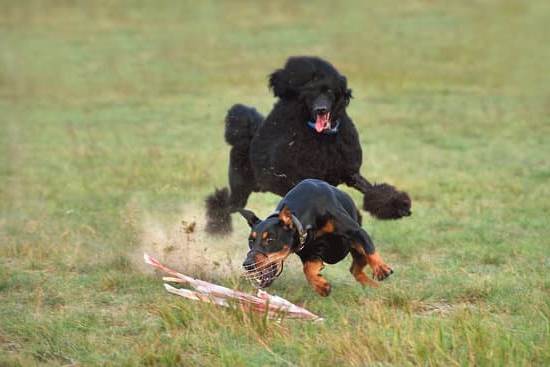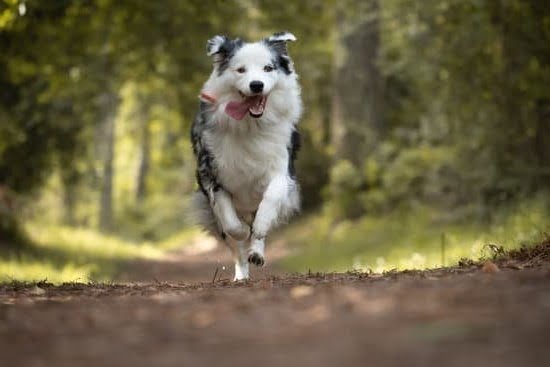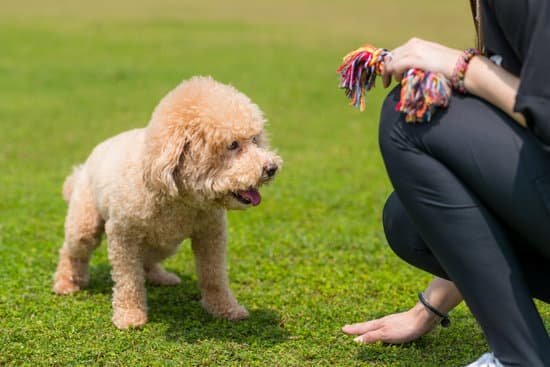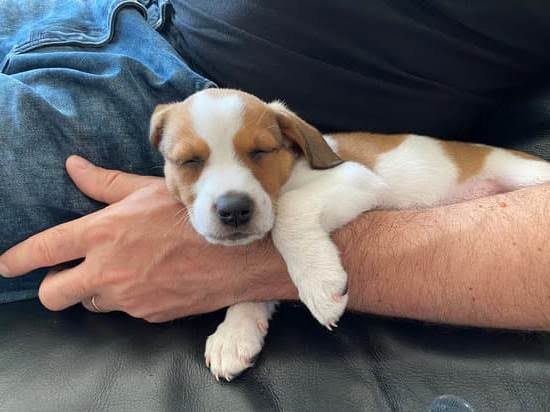Are you wondering how to train a young dog not to jump? Jumping is a common behavior in dogs, especially when they are young and full of energy. However, it can become problematic if not addressed early on. In this article, we will explore effective techniques for training your young dog to refrain from jumping.
Understanding the reasons behind why dogs jump is crucial in the training process. From seeking attention to expressing excitement, there are various motivations behind this behavior. By understanding these triggers, you can effectively address the root cause of jumping and work towards modifying your dog’s behavior.
The impact of jumping goes beyond mere inconvenience, as it can pose risks and consequences for both the dog and its owners. From potential injuries to unwanted behaviors in social settings, addressing jumping is essential for a harmonious relationship with your pet. In the following sections, we will delve into practical strategies for establishing clear boundaries and using positive reinforcement techniques to address this issue.
The Impact of Jumping
Jumping may seem like an innocent behavior for a young dog, but the impact of this action can have risks and consequences that pet owners should be aware of. One of the most immediate risks is the potential for injury, especially when dealing with large or overly enthusiastic dogs.
Even small dogs can inadvertently knock over children or elderly individuals, causing accidents and potential harm. Another consequence is the potential damage to personal property, such as claw marks on clothing or scratches from jumping on furniture.
In addition to physical risks and damage, jumping can also lead to behavioral issues if not addressed promptly. Allowing a dog to jump up on people can reinforce dominant behavior, leading to more challenging behavior in the future.
This can also make it difficult for your dog to socialize with others if they are constantly jumping on people during interactions. It’s important for pet owners to recognize the potential risks and consequences of allowing their young dog to continue this behavior unchecked.
It’s important for pet owners to take a proactive approach in addressing jumping behaviors in their young dogs. By understanding the risks and consequences associated with jumping, they can take steps to establish clear boundaries and use positive reinforcement techniques to train their pets effectively. With patience and consistency, it is possible to redirect this behavior and enjoy a well-mannered companion in the future.
Establishing Clear Boundaries
Setting clear boundaries and expectations is key in training a young dog not to jump. Dogs, especially young ones, thrive on structure and guidance from their owners. By establishing rules and expectations early on, you can help prevent jumping behavior from becoming a habit.
Consistent Communication
One of the first steps in setting clear boundaries is to communicate with your dog consistently. Use clear verbal cues such as “off” or “down” when your dog jumps, accompanied by a firm but gentle action to guide them away from jumping. It’s important that everyone in the household uses the same commands and actions to avoid confusion for the dog.
Setting Up Physical Boundaries
Physical boundaries can also be helpful in preventing jumping. This can include using baby gates or exercise pens to block off certain areas where jumping may be more common, such as the entrance door. Additionally, teaching your dog to go to a designated spot, like a bed or mat, when someone enters the home can redirect their attention away from jumping.
Consistent Reinforcement
Consistency is key in setting rules and expectations for your young dog. Reinforce positive behavior by providing rewards and praise when they greet people calmly without jumping. On the other hand, it’s important not to inadvertently reward jumping behavior by giving attention or affection when the dog jumps. This consistent reinforcement will help your dog understand what is expected of them and what behaviors are not acceptable.
Using Positive Reinforcement
Training a young dog not to jump can be a challenging but essential part of their development. Positive reinforcement is one of the most effective techniques for teaching your dog proper behavior. By utilizing reward-based training methods, you can encourage your young dog to learn and follow commands without resorting to punishment or harsh discipline.
Here are some effective reward-based training techniques to help prevent your young dog from jumping:
– **Treat Training**: Using small treats as rewards for good behavior can be highly effective in teaching your dog not to jump. When your dog approaches someone without jumping, immediately give them a treat along with verbal praise. This will reinforce the idea that staying grounded leads to positive outcomes.
– **Clicker Training**: Clicker training involves using a clicker – a small handheld device that makes a clicking sound – to mark desired behaviors. Whenever your dog refrains from jumping, use the clicker to signal that they have done something right, followed by offering a treat as a reward.
– **Playtime Rewards**: For more active dogs, playtime can also be used as a reward for not jumping. Engage in their favorite game or offer them their favorite toy when they stay paws-down. This positive reinforcement will strengthen the association between desirable behavior and enjoyable experiences.
By consistently employing these reward-based training techniques, you can effectively teach your young dog not to jump and foster well-mannered behavior in various situations. Remember that patience and persistence are key when implementing these methods, but the results will ultimately lead to a calmer and more obedient companion.
Consistency Is Key
Consistency in Training
Training a young dog not to jump requires consistent efforts from the owner or trainer. Consistency in training means implementing the same rules, techniques, and expectations every time the dog is in a situation where jumping may occur. This constant reinforcement helps the young dog understand what behavior is acceptable and what is not.
Setting a Routine
One effective way to maintain consistency in training is by setting a regular training schedule. Having set times for training sessions each day or week can help establish a routine for both the dog and the trainer. This routine creates predictability for the dog, making it easier for them to understand when they are expected to behave accordingly.
Tracking Progress
Consistency also involves tracking progress over time. Keeping a record of the dog’s behavior during training sessions can help identify any patterns or improvements. It can also provide insights into areas where additional focus may be needed. By continuously monitoring progress, adjustments can be made to the training schedule as necessary, ensuring that consistency is maintained throughout the process.
Redirecting Jumping Behavior
Jumping is a natural behavior for dogs, especially young ones who are full of energy and excitement. However, it’s important to redirect this behavior and teach alternative actions to prevent it from becoming a problem. One effective way to do this is by teaching your dog to “sit” as an alternative behavior when they feel the urge to jump.
To begin, start by using a treat to lure your dog into the sit position. Once they are sitting, promptly reward them with the treat and plenty of praise. Repeat this process consistently every time your dog attempts to jump. Over time, they will learn that sitting politely results in positive reinforcement, while jumping does not.
Another effective alternative behavior to teach your dog is “down.” This command encourages your dog to lie down on the ground instead of jumping up on people or objects. Similar to teaching “sit,” use treats and praise to reward your dog for following the “down” command and practicing this alternative behavior. With consistent training and positive reinforcement, your dog will learn that there are more appropriate ways to express their excitement without jumping.
Redirecting jumping behavior by teaching alternative actions not only helps prevent potential injuries or discomfort for both your dog and others, but also promotes good manners and obedience. By incorporating these training techniques into your daily routine with your young dog, you can effectively address their jumping behavior and guide them towards displaying more polite and controlled actions.
Socialization and Obedience Training
Proper socialization and obedience training are crucial for developing a well-behaved dog. Socialization involves exposing your young pup to different environments, people, and other animals in a controlled and positive way. This helps them become comfortable with new experiences and reduces the likelihood of fear-based behaviors such as aggression or anxiety. Obedience training, on the other hand, focuses on teaching your dog basic commands and good manners to ensure they are well-behaved in various situations.
One effective method for socialization is to enroll your young dog in puppy classes or playgroups where they can interact with other dogs in a safe environment. This allows them to learn appropriate social skills, develop confidence, and burn off excess energy. Similarly, exposing your pup to different sights, sounds, and smells early on can help prevent them from becoming fearful or reactive as they grow older.
In addition to socialization, obedience training plays a key role in building a well-behaved dog. By teaching commands such as sit, stay, come, and leave it, you can effectively communicate with your pet and prevent unwanted behaviors. Positive reinforcement techniques like using treats or praise when your dog follows a command can make the training process more enjoyable for both of you.
| Socialization Method | Obedience Commands |
|---|---|
| Enrolling in puppy classes or playgroups | Sit, stay, come, leave it |
| Exposing to different environments | Drop it, heel |
Addressing Specific Situations
Dealing with a jumping young dog can be particularly challenging in certain situations such as when visitors come to your home, during walks, and playtime. It’s important to address these specific situations as part of your overall training plan to ensure that your dog understands the boundaries and expectations in every context.
When it comes to dealing with visitors, it’s essential to practice controlled greetings with your dog. Teach your dog the “sit” or “stay” command and use it consistently whenever someone enters your home. This will help prevent jumping as they learn to remain calm and composed when guests arrive.
During walks, it’s important to keep your dog on a short leash until they have mastered not jumping on strangers. Practice walking in areas where there are fewer distractions at first and gradually progress to more crowded places once they have shown improvement. Use treats and positive reinforcement to reward good behavior during walks.
Lastly, when it comes to playtime, always encourage positive interactions with toys instead of jumping on people. Have engaging toys readily available during playtime so that your dog learns to redirect their energy towards the toys instead of jumping on you or others. Consistency is key when addressing these specific situations, so make sure everyone interacting with your dog is aware of the rules and expectations you’ve set in place.
By addressing these specific situations effectively within your training plan, you’ll be able to enjoy stress-free interactions with your young dog whether at home, on walks, or during playtime. Remember that patience and persistence are key as you work towards a well-behaved and well-mannered companion.
Handling Setbacks
Training a young dog not to jump can be a challenging process, and setbacks are bound to happen. It’s important for dog owners to approach these setbacks with patience and persistence in order to achieve success. When facing setbacks in training, it’s crucial to remain calm and avoid getting frustrated with the dog. Dogs can pick up on their owner’s emotions, so showing patience during the process is essential.
One common setback in training a young dog not to jump is inconsistency. If different family members or household members have different rules or approaches to the training, this can confuse the dog and make it harder for them to learn. In order to avoid this setback, clear communication and consistency among everyone involved in the dog’s life is necessary.
Another setback that may arise during the training process is when the dog regresses back to old habits. This can be frustrating for owners, but it’s important not to get discouraged. Regression is normal in training, especially with young dogs, and persistence is key. By consistently reinforcing positive behavior and redirecting negative behavior, most dogs will eventually learn not to jump.
| Common Setbacks | Tips for Overcoming |
|---|---|
| Inconsistency among family members | Clear communication and consistent reinforcement of rules |
| Regresion of old habits by the dog | Patience, persistence, and consistent reinforcement of positive behavior |
Conclusion
In conclusion, training a young dog not to jump is an essential part of ensuring they become a well-behaved and enjoyable companion. By understanding the reasons behind their jumping behavior and the potential risks and consequences, pet owners can take the necessary steps to establish clear boundaries and rules. Using positive reinforcement techniques and maintaining consistency in training schedules are crucial for effectively teaching young dogs not to jump.
Furthermore, redirecting jumping behavior by teaching alternative actions and focusing on socialization and obedience training will contribute to building a well-behaved dog. It’s also important to address specific situations such as dealing with visitors, walks, and playtime, as these moments provide valuable opportunities for reinforcing good behavior.
Lastly, handling setbacks with patience and persistence is key in the training process. It’s important to remember that Rome wasn’t built in a day, and it may take time for your dog to fully grasp the concept of not jumping.
By following these guidelines and investing time and effort into training, pet owners can look forward to enjoying the companionship of a well-mannered dog who knows how to greet guests appropriately without jumping. A well-trained dog not only makes life easier for their owner but also ensures a harmonious relationship between them and their furry friend. With dedication and consistent training, both you and your dog can live happily together while enjoying each other’s company.
Frequently Asked Questions
What Is the Best Command to Stop a Dog Jumping Up?
The best command to stop a dog from jumping up is the “off” or “down” command. This should be consistently reinforced every time the dog attempts to jump. It’s important to use positive reinforcement to reward the dog when it responds correctly to the command.
At What Age Do Dogs Stop Jumping?
Dogs usually stop jumping as they mature and are trained properly, typically around 1-2 years of age. However, some dogs may continue the behavior if it has not been consistently addressed through training and positive reinforcement.
Why Do Young Dogs Jump on You?
Young dogs often jump on people as a form of greeting or excitement. Jumping is a natural behavior for dogs when they are young, but it’s important to train them early on to understand that there are more appropriate ways to greet people without jumping. This can be done through consistent training and positive reinforcement techniques.

Welcome to the blog! I am a professional dog trainer and have been working with dogs for many years. In this blog, I will be discussing various topics related to dog training, including tips, tricks, and advice. I hope you find this information helpful and informative. Thanks for reading!





